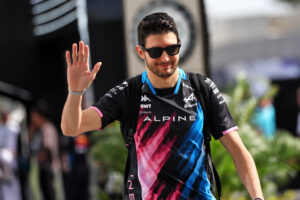Time to break out the Talladega Superspeedway checklist.
Let’s see:
Drivers angry after a “big” wreck?
That was a hell of an interview from @joeylogano there. Lots to unpack. Raw and honest thoughts.
💭 "When are we gonna stop? This is dangerous. I've got a roll bar on my head. I'm one hit away from a Ryan Newman situation."
Called it "unacceptable" and is "happy (he's) alive."
— Davey Segal (@DaveyCenter) April 25, 2021
CHECK*.
*DISCLAIMER: I don’t totally disagree with what Joey Logano said, and I’ll elaborate on that later in this piece.
Overreactions on the bird app to “big” wrecks?
Remember when NASCAR put in smaller fuel cells to break up packs and we had a caution-free race here? May want to revisit that
— Hank Lee (@hanklee89) April 25, 2021
CHECK.
Racing that produces the most lead changes we see all season?

CHECK.
A big-ass wreck(s) that wads up 10+ car?
According to the checklist that I totally didn’t make up, Sunday’s GEICO 500 gave us three of four staples of racing at Talladega. Yet if you glanced NASCAR Twitter, you’d think nobody saw a restrictor plate race, before.
The White Zone: Welcome to Talladega
Next to the playoffs, nothing in NASCAR is more polarizing than restrictor plate racing. You either love it to death, like I do, for the heart-pounding, razor’s edge action that puts on some of the best racing we see all season, or despise it with every fiber of your being for the large, multi-car wrecks the nature of plate racing produces.
I understand why people dislike plate racing, but Sunday isn’t the go-to example of why it’s bad that so many on Twitter think it is.
Take Logano’s wreck at the end of Stage 1. His car flipped and hit the roof of Bubba Wallace‘s car. Logano said the roll bar pushed in and that he was “one hit away from a Ryan Newman situation.” Keep in mind that Logano’s statement was emotionally-charged. So his comments might not reflect his true thoughts.
Assuming these are his true thoughts, however, what can you do at this point that’s not been done, already? Yes, we can’t have cars getting airborne. NASCAR must address that. But it’s part of the inherent risk of plate racing, as are the big-ass wrecks and racing on the razor’s edge.
What can be done?
The only real way you stop that is if you bulldoze the banking at Talladega (and Daytona), like the late David Poole advocated. If you want that, then understand you’ll turn Daytona and Talladega into Pocono 2.0*, where passing is more of a Herculean task than at any other track we go to.
*DISCLAIMER: I don’t mean this as a slight against the Tricky Triangle. Track president Ben May and the Mattioli family do fantastic work with the facility. My point is simply that the low-banking profile of Pocono Raceway (compared to Daytona and Talladega) make passing very difficult. Furthermore, I’ve largely enjoyed the product Pocono puts on.
Yes, plate racing is dangerous. Probably more so than any style of racing NASCAR does all season. Yes, we can’t have cars get airborne. Yes, we should bring the speeds down, like William Byron suggested. But that danger, combined with the bumper-to-bumper, inch-by-inch racing it delivers, is part of the draw of plate racing.

Sunday’s winner Brad Keselowski said it best, after his victory at Talladega in 2016.
“Racing has always been that balance of daredevils and chess players,” he said. “Some weekends we’re chess players, some weekends we’re daredevils. This has always been the more daredevil style of track, which probably offsets some of the tracks that we go to where we’re the chess player.
“Part of what makes racing so difficult and such an interesting dynamic is you compete against all the same people every week, and the thing that really mixes it up is the tracks are different every week. It’s a different field, a different court.
“This one is one where it’s in‑your‑face challenging to you know if you make a mistake, it’s going to be a really, really big wreck. You could go airborne, a lot of bad things could happen.
“That is part of the challenge, overcoming that thought in the back of your head. It’s difficult for people to do, but it’s part of what makes it special, is the fact that you know that can happen. Despite it, you’re going to make a move inches from another drive, cut them off, push them, you’re going to drive sideways, hang it all out there knowing something bad can really happen. I think it’s special under the circumstances and under that level of adversity. It’s a challenge I’ve always embraced.”
Restrictor plate racing is the style of auto racing most synonymous with NASCAR. It’s the style of racing that puts on the best racing we see all season, especially by metrics like lead changes. It’s the style of racing that truly showcases how great the drivers of NASCAR truly are.
And in a time when a major complaint from race fans is the lack of diversity with the racing, why do away with the style that’s most NASCAR?
That’s my view, for what it’s worth.
TOP IMAGE: James Gilbert/Getty Images






